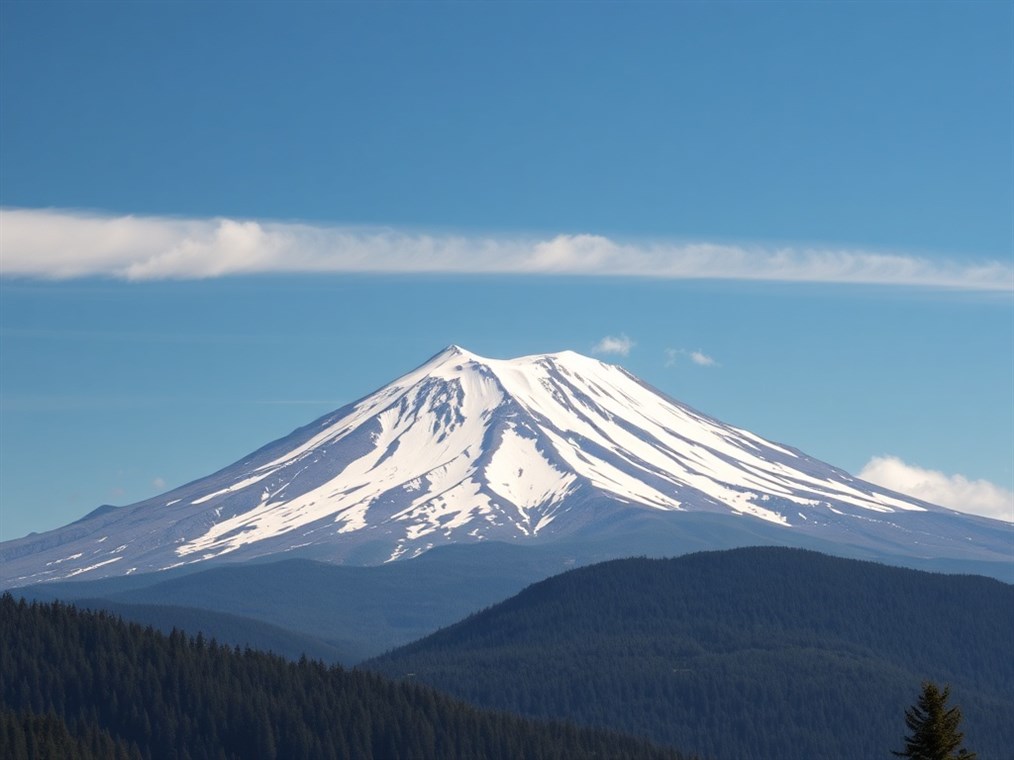
Mount Shasta: How Old Is This California Giant, Really?
FactsMount Shasta: How Old Is This California Giant, Really?
Okay, so you’re gazing up at Mount Shasta, right? That massive, snow-capped beauty dominating Northern California. It’s hard not to wonder: how long has that thing been there? The answer, as it turns out, isn’t exactly straightforward. We’re not talking about a simple birthday here. Mount Shasta’s story is one of slow builds, dramatic collapses, and fiery rebirths spanning literally hundreds of thousands of years.
The story begins way back – almost 600,000 years ago! That’s when things started bubbling on what’s now Shasta’s western side. Imagine an ancestral Mount Shasta, a huge volcano slowly taking shape. But this early version didn’t last. Sometime between 300,000 and 360,000 years ago, disaster struck. The entire north side gave way in a colossal landslide. Can you picture that? A chunk of mountain, bigger than some cities, just gone.
This wasn’t just a little slip. We’re talking about 6.5 cubic miles of debris – enough to bury a whole lot of houses! It roared northwest into the Shasta Valley, carving out the path where the Shasta River now flows. If you’re ever driving on I-5 between Weed and Yreka, check out the hummocky ground to the east. Those weird bumps and hills? Those are actually pieces of the old mountain, carried along by the slide. Talk about a geological souvenir!
So, what about the Mount Shasta we see today? Well, that’s mostly the work of four different “cones,” built one after another. Think of them as separate construction projects, each adding to the mountain’s impressive bulk.
First up is Sargents Ridge Cone, the oldest of the bunch. Geologists reckon it’s less than 250,000 years old. This one’s been through the wringer, enduring two major ice ages. You can spot it mainly on Shasta’s south side.
Next, we have Misery Hill Cone, a relatively young whippersnapper at under 130,000 years old. It forms a big part of the upper mountain and has only been through one major ice age.
Then comes Shastina, that perfectly cone-shaped peak you see to the west. Shastina is the showoff of the family, built from oozing lava flows around 9,500 years ago.
Finally, there’s Hotlum Cone, the baby of the family – and the tallest! It started forming about 8,000 years ago, and a big ol’ dome of lava pushed its way up to create the summit.
Each of these cones was built from lava flows, ash, and mudflows, erupting from the central vents. It was a messy, dramatic process, followed by even more eruptions of domes and cinder cones.
Now, let’s zoom in to more recent times – the last 10,000 years. This period, known as the Holocene, has been pretty busy for Shasta. Both Hotlum and Shastina were built during this time. On average, Shasta blows its top every 800 years or so. But lately, it’s been even more frequent, erupting roughly every 600 years in the past 4,500 years. The last real eruption was only about 200 years ago, from the Hotlum Cone. It sent pyroclastic flows, hot mudflows (lahars), and cold mudflows down the mountain.
So, what’s Mount Shasta up to these days? Well, it’s considered a potentially active volcano. It’s been quiet lately, but scientists are keeping a close eye on it. They monitor the gases coming from the summit and keep track of any ground movement. The U.S. Geological Survey considers it a “very high-threat volcano,” which sounds a bit alarming, but it just means they’re taking it seriously.
So, to answer the big question: How old is Mount Shasta? The most accurate answer is that the volcanic center has been active for around 590,000 years. The mountain we see today has been built up over the last 250,000 years, with eruptions continuing even in the last few centuries. That makes Mount Shasta a relatively young, dynamic, and potentially feisty feature on the California landscape. It’s a place that’s still very much alive, and that’s what makes it so captivating.
You may also like
Disclaimer
Categories
- Climate & Climate Zones
- Data & Analysis
- Earth Science
- Energy & Resources
- Facts
- General Knowledge & Education
- Geology & Landform
- Hiking & Activities
- Historical Aspects
- Human Impact
- Modeling & Prediction
- Natural Environments
- Outdoor Gear
- Polar & Ice Regions
- Regional Specifics
- Review
- Safety & Hazards
- Software & Programming
- Space & Navigation
- Storage
- Water Bodies
- Weather & Forecasts
- Wildlife & Biology
New Posts
- Diving Deep into Tangerine: More Than Just a Sunny Locale
- Jamaica Backpack Daypack Pockets Shopping – Review
- TEOYETTSF Climbing Backpack Multifunction Military – Buying Guide
- The Curious Case of Cavendish’s Classroom: Where Did This Science Star Study?
- Dragon Backpack Insulated Shoulder Daypack – Buying Guide
- ROCKY Hi-Wire Western Boots: A Rugged Review After a Month on the Ranch
- Vertical Curbs: More Than Just Concrete Barriers
- Regatta Modern Mens Amble Boots – Honest Review
- YMGSCC Microfiber Leather Sandals: Beach to Boardwalk, Did They Hold Up?
- Tangier: More Than Just a Backdrop in “Tangerine”
- DJUETRUI Water Shoes: Dive In or Doggy Paddle? A Hands-On Review
- Barefoot Yellow Pattern Hiking 12women – Is It Worth Buying?
- Koa Trees: How Fast Do These Hawaiian Giants Really Grow?
- DDTKLSNV Bucket Hat: Is This Packable Sun Shield Worth the Hype?